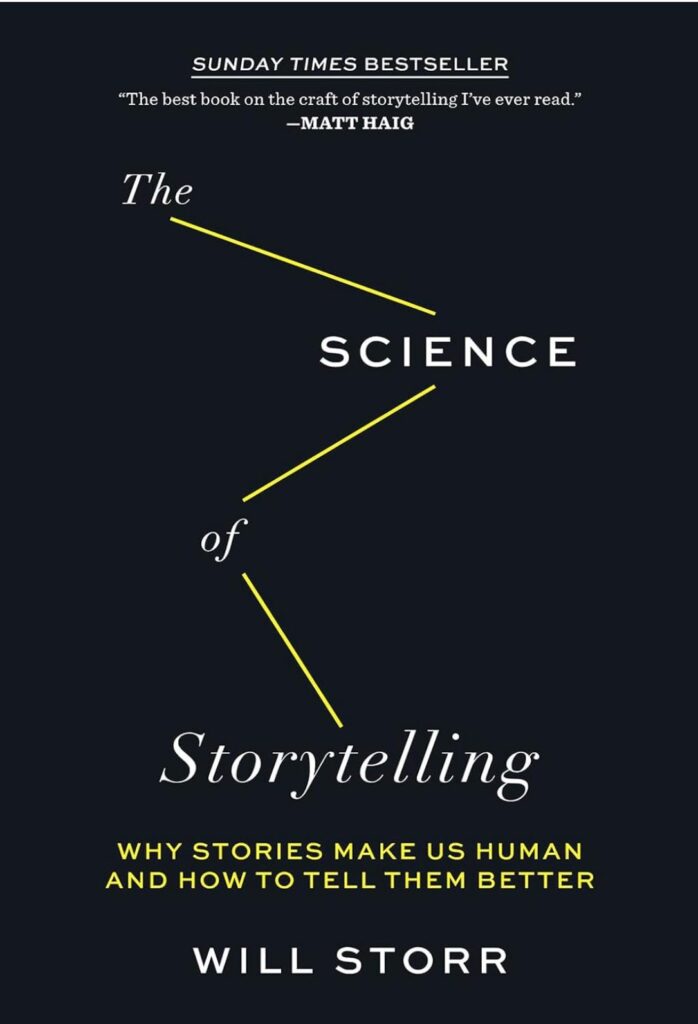Let’s face it, writing the first chapter of any story is daunting. But in the Hucow genre, where we’re working with themes like transformation, milking, breeding, and power dynamics, that first chapter is even more critical.
The opening moments need to hook the reader, pull them into your world, and give them a taste (no pun intended) of what’s to come.
I’ve been writing Hucow stories for a while now, and I’ve learned that the first chapter is where we set the tone and introduce the unique elements that make Hucow fiction stand out.
But how do we balance all those steamy, intriguing bits with a solid start to the story? Let me walk you through how I approach crafting an engaging first chapter that keeps readers turning pages.
Table of Contents
ToggleWhy the First Chapter is Key
You’ve probably heard the phrase “first impressions matter.” In Hucow stories, this couldn’t be more accurate. The first chapter is the reader’s first taste of your world—whether it’s an alien farm or a remote countryside estate where forbidden things are happening.
You want them hooked, intrigued, and just curious enough that they have to keep reading.
Think about the first chapter as a window into the deeper parts of your story. Are you setting up a transformation where the heroine becomes a Hucow? Is there a breeding ritual that’s about to unfold?
Your job is to tease the reader, give them just enough information to pull them deeper into the story while keeping some mysteries for later. It’s all about pacing—revealing just enough without giving too much away.
Starting with Strong Imagery
One thing that’s worked wonders for me in my writing is starting with vivid imagery. I’m a big fan of opening my stories with sensory details that immediately transport the reader into the world I’ve created.
If they can feel, hear, and taste the world in those first few paragraphs, they’re more likely to stick around.
In a recent Hucow story I wrote, I started with a scene where the protagonist walks through the mist-laden fields of the Alpha’s estate.
The air is thick with tension, the scent of fresh hay mingling with something more primal. She knows something is coming, but she isn’t sure what.
This sets the mood immediately. The reader knows transformation and power dynamics are about to unfold.
Example: “The heavy scent of earth and something darker hung in the air. She walked slowly, her hands brushing against the dew-covered grass, knowing that when she crossed that threshold, everything would change.”
By focusing on the senses, you pull your readers in without diving directly into exposition. They’re already in the setting, feeling what the character feels. This approach makes them want to see what happens next.
Establishing Power Dynamics Early
Power dynamics are a huge part of Hucow stories, and the first chapter is a perfect time to start building that tension. Is the Alpha already in control, or is the Hucow about to discover her new role?
These dynamics don’t have to be explicit right away, but you can use small moments to hint at what’s coming.
In the first chapter, I like to have the Alpha make an entrance in a way that signals their authority. It doesn’t need to be over-the-top. Sometimes, a simple, firm command or an intense stare does the trick.
The Hucow, whether she knows it or not, will feel the shift in power, and so will the reader.
Example: “He stood in the doorway, his silhouette framed by the last light of the day. He didn’t say a word, but the way his eyes lingered on her body was enough. She felt the shift, the tightening in her chest that told her nothing would be the same.”
This subtle moment already suggests who holds the power, and that dynamic can be built on as the story progresses. In Hucow stories, we don’t need to rush into things; laying the groundwork makes the eventual submission or transformation that much more powerful.
Introducing Transformation Slowly
Transformation is another essential element in Hucow fiction, whether it’s a physical change or an emotional journey. In that first chapter, I like to sprinkle in hints that something is about to change.
Maybe the Hucow feels a strange sensation in her body, or maybe she starts noticing something different in the way the Alpha looks at her.
You don’t need to go full-on transformation right away. Think of it like a slow burn. The first chapter is the spark that ignites everything else.
In one of my stories, the protagonist begins to feel changes in her body—slight heaviness in her breasts, a new sensitivity in her skin—but she brushes it off as nerves. This gets the reader curious.
They know something is about to happen, and they want to stick around to see how it unfolds.
Example: “Her body felt different. Her breasts, usually so small and unremarkable, felt heavy, almost aching with a fullness she didn’t recognize. She shook her head, trying to dismiss it, but the feeling lingered.”
By giving the reader a taste of the transformation early on, you create intrigue. They’ll want to know what comes next—and how far this change will go.
Building Sexual Tension from the Start
Let’s be honest—Hucow stories are all about that delicious build-up of tension, and the first chapter is where you set the stage for it. Even if nothing explicit happens in those first few pages, you can build tension through body language, dialogue, and subtle actions.
I love creating moments where the characters get close—too close—but not quite yet. Maybe the Alpha brushes the Hucow’s skin, or maybe there’s a look that lingers just a little too long. These moments leave the reader wanting more, building anticipation for the steamier scenes that are sure to come later.
Example: “His hand lingered on her arm, the warmth of his touch sending a shiver down her spine. It was just a touch, nothing more, but it felt like a promise.”
It’s the tension that pulls readers in and makes them want to know when—if—these characters will give in to the attraction simmering just beneath the surface.
Balancing Action with Dialogue
I’ve found that a balance of action and dialogue in the first chapter helps keep the pace moving without overwhelming the reader with too much information at once.
In a Hucow story, where power dynamics and breeding themes are central, dialogue can reveal a lot about the relationship between the characters.
In the opening chapter, I like to use dialogue to hint at what’s to come. The Alpha might be firm, giving subtle commands that the Hucow doesn’t quite understand yet.
The Hucow might be hesitant, unsure of what’s happening. This creates a back-and-forth that adds to the tension.
Example: “You’re ready,” he said, his voice low and sure.
“I… I don’t know if I am,” she replied, her voice trembling.
“You will be.”
This kind of dialogue builds suspense and keeps the reader hooked, making them eager to see how the dynamic will evolve.
Conclusion
In the end, that first chapter of your Hucow story needs to do one thing—make the reader want more.
Whether it’s through sensory detail, building power dynamics, hinting at transformation, or layering in tension, the goal is to create a world that feels both steamy and full of possibilities.
In my own stories, I’ve learned that it’s the little moments—those subtle shifts in power, those hints of change—that keep readers coming back.
Don’t feel like you need to rush. Take your time setting the scene, establishing the relationship between the Alpha and the Hucow, and teasing the transformation.
The rest will follow.
References and More Information
If you wish to learn more about the topics I covered in this article, please refer to the following blog posts on this website:
- Setting the Stage for the Hucow Transformation – Introduce hints and teases about the transformation early in the story.
- Crafting a Satisfying Hucow Happily Ever After – Ensure your story has a fulfilling conclusion that aligns with reader expectations.
- Writing Cliffhangers in a Hucow Series – How to end chapters or books with tension to keep readers invested.
- Delivering an Emotional Payoff in the Closing – Structuring the story’s conclusion to provide emotional closure and satisfaction.
- Creating Instant Chemistry in the Opening Pages – How to establish attraction and tension between characters in the first few chapters.
- Crafting a Powerful Middle for Hucow Stories – Developing emotional and erotic tension in the middle of your story to keep readers engaged.
Alternatively, below are some external references on this topic that you may find useful:
- Hucow Fantasies – A website dedicated to Hucow fiction, offering stories, author resources, and community discussion around the genre.
- Romance Author Resource – A comprehensive guide for romance authors, including tips and tools specifically for niche genres like Hucow stories.
- Breeding Fiction Explained – This site delves into the breeding trope often used in Hucow and similar erotic fiction, offering in-depth explanations and writing advice.
- Exploring Power Dynamics – A resource that explores power dynamics in fiction, focusing on dominance and submission, often seen in Hucow stories.
- Milking Stories Collection – A collection of Hucow and other milking-themed stories for inspiration, with writing tips for creating engaging scenes.
- Writing Steamy Fiction – A blog providing advice on how to write compelling and steamy scenes in erotic fiction, useful for Hucow authors looking to add heat to their stories.
- Transformation Themes in Romance – A website focused on transformation themes in romance, offering insights on physical and emotional transformations relevant to Hucow stories.
- Erotic Writing Tips – A comprehensive guide to writing erotic fiction, from building tension to writing explicit scenes, tailored for different erotic genres, including Hucow fiction.







































